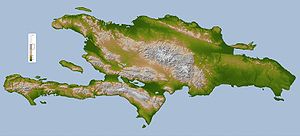Provides a quick, cheap, portable and sensitive test
Engineers at the University of Michigan have developed a strip of paper infused with carbon nanotubes that can quickly and inexpensively detect a toxin produced by algae in drinking water. The paper strips perform 28 times faster than the complicated method most commonly used today to detect microcystin-LR, a chemical compound produced by the blue-green algae (cyanobacteria) commonly found on nutrient-rich waters. Microcystin-LR is among the leading causes of biological water pollution and is believed to be the culprit of many mass poisonings going back to early human history.
Microcystin-LR (MC-LR), even in very small quantities, is suspected to cause liver damage and possibly liver cancer. The substance and others like it are among the leading causes of biological water pollution. It is believed to be a culprit of mass poisonings going back to early human history.
Water treatment plants—even in developed countries—can’t always remove MC-LR completely, nor can they test for it often enough, said Nicholas Kotov, a professor in the departments of Chemical Engineering, Biomedical Engineering and Materials Science and Engineering who led the project. The biosensor he and his colleagues developed provides a quick, cheap, portable and sensitive test that could allow water treatment plants and individuals to verify the safety of water on a more regular basis.
“The safety of drinking water is a vital issue in many developing countries and in many parts of the United States,” Kotov said. “We’ve developed a simple and inexpensive technology to detect multiple toxins.”
Related articles by Zemanta
- Killer Algae a Key Player in Mass Extinctions (usnews.com)










3 Comments
Alena
I recently came across your blog and have been reading along. I thought I would leave my first comment. I don't know what to say except that I have enjoyed reading. Nice blog. I will keep visiting this blog very often.
Alena
http://grantsforeducation.info
Tim Crowther
Great blog. I would be interested in learning if you have developed the paper strips to detect drinking water levels of E-coli and other protozoa and enteric viruses.
innovation
Tim,
Suggest you contact the author directly . . .
CHeers!